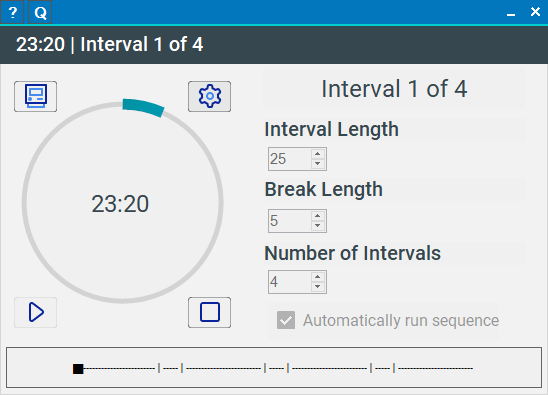How did Keeping Time develop?
The idea for Keeping Time came from the wish to have an easy way of tracking overtime hours, but also to track whenever it was possible to take any time off to reduce these accumulated hours.Most other time tracking applications are either geared towards tracking work hours in general, or are heavily project-based, requiring the user to input a "job" and "client" for every entry. Also I found none that allowed the user to track time off, too, and then subtract any time off automatically from the collected overtime.
Tracking work hours in general (essentially like an attendance clock) can be done with lots of systems, but I was only interested in tracking actual overtime. After all, the regular 9-5 day job hours are "served" every day anyway, so there's no need to protocol these times. I wanted to only track the overtime!
Project-based time trackers are nice and neat, but rarely will I need that kind of depth. I need to track from when until which time I do overtime; since it is for the same employer all the time and it makes little difference what exactly I do during that time from a time tracking point, there's no need for fancy categories, project management, etc…
After a long stint with more or less fancy spreadsheets, I ventured to make my own solution to the problem!
Enter Keeping Time!
What makes Keeping Time different to other time trackers?

The List window, showing a timelist with some work times already entered.
The main difference by far is the laser focus on the core function: Track work hours, track time off to reduce the collected hours. Then export a CSV (or import the project file into a software that supports it natively) for your employer.
But there are some other points that are important to me in its development:
- as much as I like web apps for a lot of things, for time tracking I wanted a good old desktop application. No cloud, no subscription, no 3rd party involvement at all.
- the file format should be as open as possible, easily human-readable and stored in plain sight
- the software should be fully portable, requiring no installation and leaving no traces at all on a user's system.
I am happy that Keeping Time fulfils all these points.
But there are some other points that are important to me in its development:
- as much as I like web apps for a lot of things, for time tracking I wanted a good old desktop application. No cloud, no subscription, no 3rd party involvement at all.
- the file format should be as open as possible, easily human-readable and stored in plain sight
- the software should be fully portable, requiring no installation and leaving no traces at all on a user's system.
I am happy that Keeping Time fulfils all these points.
Keeping Time saves its files in an XML-based format, easily readable. It can export to CSV for maximum compatibility with pretty much any other application.
There is zero tracking, monitoring, analytics, etc. anywhere in the application. There's not even an installation if you're using the portable version. Start the .exe, use it, if you do not like it/need it anymore, delete the whole folder and everything is fully gone.
Alternatively, a convenient installer is available, too.
There is zero tracking, monitoring, analytics, etc. anywhere in the application. There's not even an installation if you're using the portable version. Start the .exe, use it, if you do not like it/need it anymore, delete the whole folder and everything is fully gone.
Alternatively, a convenient installer is available, too.
An evolving project
Keeping Time is developed out of the need for an application that can replace cumbersome spreadsheets or way over the top corporate employee management suites for simple and easy work tracking.
As such, it is completely driven by the needs of those who use it. Not by any financial gains, corporate roadmap, big data master plan, or similar.
If you use it, and have suggestions for new features or how to improve features: Let me know! All suggestions are carefully considered and are implemented in such a way that no existing functionality is broken. You can configure the newest version of Keeping Time to work in exactly the same way as the very first version, which only had a handful of lines of code!
As such, it is completely driven by the needs of those who use it. Not by any financial gains, corporate roadmap, big data master plan, or similar.
If you use it, and have suggestions for new features or how to improve features: Let me know! All suggestions are carefully considered and are implemented in such a way that no existing functionality is broken. You can configure the newest version of Keeping Time to work in exactly the same way as the very first version, which only had a handful of lines of code!

The Interval Timer, for quick and easy work scheduling.